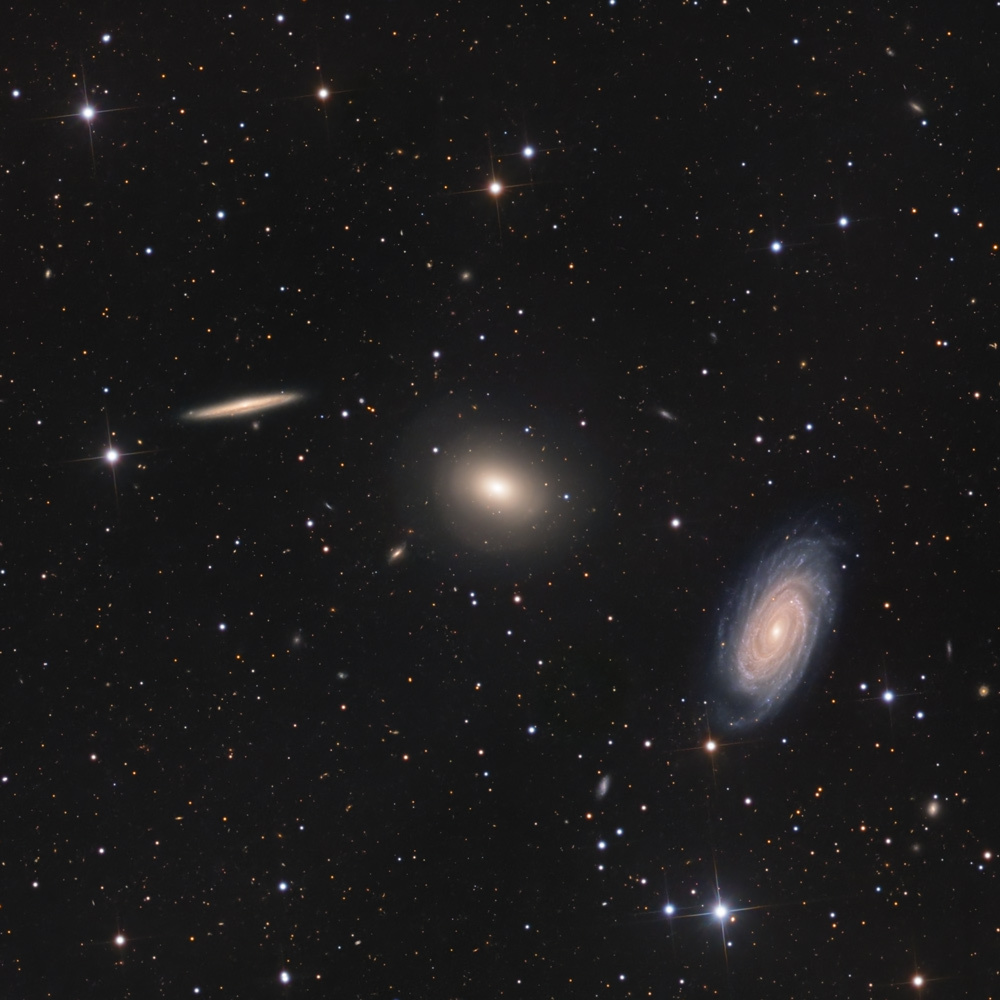

The three galaxies in the center of this image are sometimes called the Draco Group, as they are a group of galaxies fairly closely located within the constellation Draco.
From left to right, these galaxies are catalogued as edge-on spiral galaxy NGC 5981, elliptical galaxy NGC 5982, and face-on spiral galaxy NGC 5985. All three galaxies are between 100 million light years and
130 million light years from Earth, and are part of an identified group of galaxies called "NGC 5982 Group." As is often the case with elliptical galaxies, there is evidence that NGC 5982 is the
result of a merger of one or more galaxies. All three are large galaxies, about the size of our Milky Way or larger (it is estimated that NGC 5985 is over 200,000 light years across, probably a bit
larger than the Milky Way). For scale, this entire photo is about the same angular distance across as a full moon.
I always love how almost any view of the heavens will show so many background galaxies, and this is no exception. If you examine the highest-resolution version, you can see many tiny galaxies mixed in
among the stars (they're the ones that are either quite oblong or faint and blurry, so generally a galaxy). Of course, these are huge things, tens of thousands of light years across, with billions upon
billions of stars in each one, but they're so far away they barely show at all.
Copyright 2019 Mark de Regt